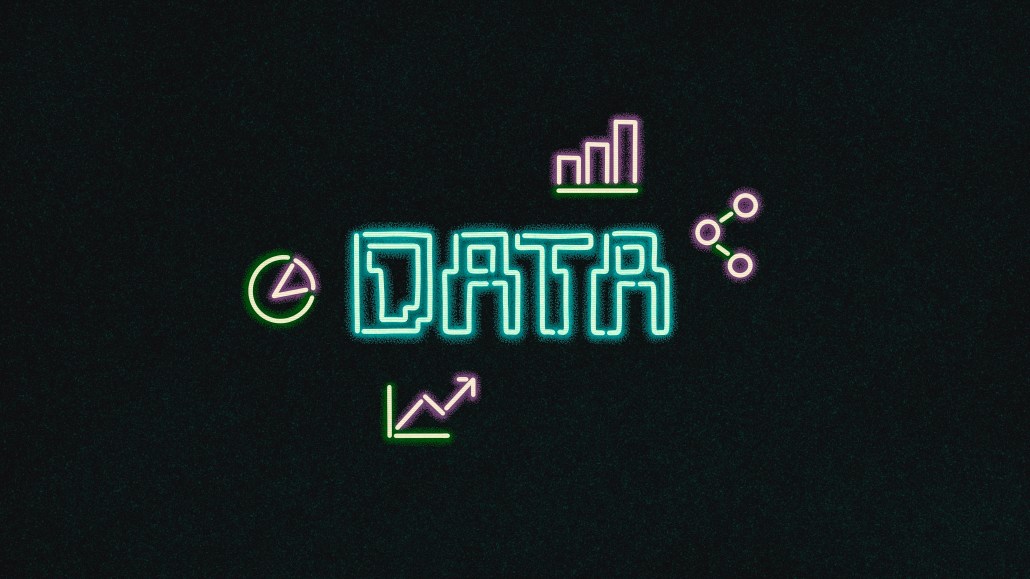Media Buying Briefing: IPG shores up its data intelligence offerings in big and small ways

This Media Buying Briefing covers the latest in agency news and media buying for Digiday+ members and is distributed over email every Monday at 10 a.m. ET. More from the series →
In the face of mounting pressure from clients to cut costs and better understand the nature of programmatic or automated buying of media, some are choosing to shore up their data intelligence prowess. And IPG is just the latest holding company to shake up its roster of products and offerings to simplify and speed up its ability to deliver better insights on media investments.
IPG announced last week it is merging its Matterkind and Reprise units into a souped up Kinesso unit that folds the performance-marketing abilities of Reprise and the intelligence-gathering of Matterkind (which has been connected to Acxiom, IPG’s massive data warehouse) into Kinesso. The holding company moved the merged unit back into Mediabrands, and put Reprise’s CEO Jarrod Martin in place as Kinesso’s CEO (according to LinkedIn, back in April already).
Separately but still within IPG, digital agency R/GA’s Applied Intelligence unit has delivered strong results for some of its clients, including the Environmental Defense Fund, as its head Christian Kugel works to beef up that offering to set the agency apart from its competition.
What exactly does data intelligence mean? For the purposes of this story, it refers to bringing deeper insights through different data inputs and outputs (with an eye toward a post-cookie world), to get to a more granular understanding of clients’ customers, followed by activation in a way that exceeds what they’ve been able to do before.
Rumblings around IPG hint that a recent executive exodus was brought on by the need to find cost-savings in the expensive world of sophisticated data gathering — in which data intelligence fits.
Martin dismissed that assertion, but did note that the change is meant to improve its offerings to clients and adapt to an “algorithmic” future.
“We need to change our processes, while simultaneously building technology and training our people — and if those three things are not connected, we can’t derive maximum benefit within the shortest amount of time,” Martin explained. “Historically, we might be building technology solutions that weren’t maximally adopted, because they weren’t necessarily as closely connected to the services layer. And that’s the goal here — to bring those things together so that we can drive the maximum impact in the minimum time.”
Martin also noted that the revamped Kinesso will be essentially invisible as a brand, pointing inwards across Mediabrands’ media agencies (UM, Initiative and Mediahub) rather than be client-facing.
“The agency of the future isn’t about having the best answers. It’s about asking the best questions,” he added. “Because whatever answers that exist today, will be redundant tomorrow. So if you’re continuously asking those best questions, then you’ll generate the best results for your clients.”
Independent analyst Brian Wieser said it almost doesn’t matter whether IPG is making this move from a position of strength or weakness — it’s more important that the holdco keeps up with the Joneses on data intelligence and performance marketing. “The broad trends for the industry are reflected in these pieces of news — simplification as a long term trend, and all these advantages that follow from it,” said Wieser. “All things programmatic are increasingly central and increasingly important parts of the business. And we know that principle based trading is increasingly important and a higher priority because clients are exhibiting a preference for it, or a tolerance for it.”
Meanwhile, at R/GA, the expansion of the agency’s Applied Intelligence unit essentially creates a product-based approach that diagnoses problems, has more rigor around estimating, and aggregates multiple perspectives for the best outcome for clients who’ve used it, according to Christian Kugel, who leads the group as svp. Work for clients including EDF aims to drill down to a more specific and active target audience.
“One of the components of frameworks that R/GA has used for the past five years or so has been this idea of a first best customer — the notion is, if you solve their problems, you can solve the problems of a lot of customers,” said Kugel. “What we’re trying to do is eliminate as many individuals from the target audience as possible, because they just don’t qualify, they don’t represent potential future growth. Then we use tried and true segmentation analytics to say, Okay, we’re left with a cohort, and within it, we need to understand who’s at the top of that pyramid. What that does is guide the subsequent phases of the project, including the the overarching strategy, the creative brief, the channel planning or the connections planning that happens and becomes this touchstone for the rest of the project.”
EDF’s vp of performance marketing, Dave Acup, has been a client of R/GA since early 2020, and for the last year worked together on a complete redesign of the environmental organization’s website, from research to design to language and usability.
As for results, Acup noted that the revised web site helped EDF’s brand recognition increase by 3% year over year, while social followers increased, as did traffic to EDF’s website from social. “The jury’s still out completely, but yeah, KPIs are definitely pointing in the right direction,” said Acup.
Bottom line for all agencies is, if you haven’t shored up your data intelligence abilities to prepare for a cookie-less future (which is coming), you’ll find yourself behind. IPG may not have been the first holdco to grasp this and make requisite changes, but it’s certainly not the last either.
Color by numbers
For Hispanic Heritage Month, Collage Group looked at some of the traditions, brands and cultural influences of the growing community. In 2020, it found that the Hispanic population in the U.S., combined with rising incomes, amounted to $1.9 trillion in buying power for this cohort — higher than Black and Asian segments. —Antoinette Siu
More stats:
- The top performing brands that offer familiarity, value and unique understanding are: Walmart, Netflix, Target, Crayola and Nike. There were a total of 20 that ranked highest in the full study.
- In the Target case study, 56% of Hispanic consumers said they like when brands include cultural holidays in advertising.
- In Nike’s case, having Hispanic leadership helped it score high in the study — 48% of participants said there are not enough Americans of their race or ethnicity in positions of power, authority and decision-making.
- 80% percent of those surveyed said brands/companies should be involved in social and political issues in some respect.
Takeoff & landing
- CPG giant Nestlé picked WPP’s bespoke agency Openmind to be its media agency in Europe, beating out pitches from Publicis, IPG and Dentsu, according to reports.
- Havas Media picked up Shell Oil’s media business and immediately was criticized by groups such as Clean Creatives, which has published a list of agencies that do work with fossil fuel companies as a means of pressuring them to drop such business. The incumbent is WPP, which had the account since 2005.
- Personnel moves: Omnicom Media Group UK named Laura Fenton CEO, moving her over from OMD UK, where she was CEO … Horizon Media’s WHY Group hired Scott Lukas to be its svp of human intelligence, bringing him over from creative agency MMB where he was chief strategy officer … Live commerce platform TalkShopLive promoted Joe Siyam to svp of talent and entertainment partnerships … West coast independent shop Ocean Media hired Matthew Aronowitz as vp of data science, bringing him over from BSE Global, where he was a data scientist.
Direct quote
“[Elon] Musk’s intention of enforcing a paid-subscription model on Twitter could be the final nail in its coffin. The constant upheaval at Twitter is toxic for the platform and its future profitability. The scale and frequency of change is unsettling for brands and consumers. However, among all of Musk’s seismic and controversial platform updates, this might prove to be the most significant one yet.”
—Ed East, founder and global CEO of influencer agency Billion Dollar Boy
Speed reading
- Senior martech reporter Marty Swant covered a series of stories around major firms enhancing their AI offerings, including both Microsoft and Amazon.
- Media agency reporter Antoinette Siu got a reaction from several other agencies to Magna’s updated 2023 and 2024 ad revenue predictions.
- And platforms reporter Krystal Scanlon examines the thinking behind agencies’ latest pivot to video — this time short-form video.
More in Media Buying

As Integral Ad Science marks its fourth anniversary on the Nasdaq, speculation mounts over its future
Efforts are underway to take IAS private but there are varying levels of interest from private equity groups.

Media Buying Briefing: Two years later, media buyers still aren’t fully sold on The Trade Desk’s Kokai platform
Two years after its launch, The Trade Desk’s Kokai tool has acquired a mixed reputation among the agency media buyers it was designed for.

The Rundown: The regulatory hurdles still in the way of the Omnicom-IPG merger
British, Australian and EU regulators are all looking into mega agency merger.







